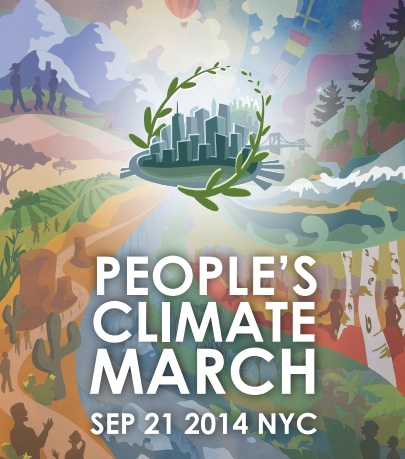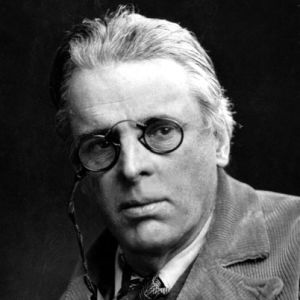What’s a March FOR?
Increase Your Intensity
 With all the coverage that the huge (400,000 person) People’s Climate March has received in the media, we still have to ask: what is a march for? How exactly does it fit into a coherent political strategy to combat global warming?
With all the coverage that the huge (400,000 person) People’s Climate March has received in the media, we still have to ask: what is a march for? How exactly does it fit into a coherent political strategy to combat global warming?
You might say that by pointing to the media coverage, I have answered the question. But media coverage is not a goal. It is a method, which brings us back to the original question. A method for what? The theory of social movements seems to be at somewhat of a loss here.
Consider Charles Tilly, perhaps the greatest of all scholars who studied on social movements. Tilly emphasized street demonstrations as a fundamental tactic of social movements, but in his summa on the subject, he was ambiguous about how precisely they produced political change. Tilly even suggested that social movements diverged from traditional electoral politics, which seems to me quite wrong: the point is that social movements use whatever resources they can to achieve their ends. Mobilization does not exist for itself. Tilly pointed to demonstrations such as “People Power” in the Philippines, where large street protests led to the removal of Ferdinand Marcos and later Joseph Estrada. That doesn’t seem to work here, though: the protests the other day certainly demanded action, but they were not demanding removal of particular political leaders and did not have the power to achieve it in any event.
The street demonstration also serves as a way of raising an issue’s salience. That certainly appeared to be the function of civil rights marches: they made it very clear that Jim Crow was not a peculiar institution of the South that only arrogant northern liberals despised. But that does not seem quite right here, either. Lots of people know about the controversy surrounding climate change, and indeed, as I have suggested before, the Republican Party needs the climate issue as a way of trying to maintain its “three-legged” political coalition between evangelicals, neoconservative hawks, and the wealthy. The Civil Rights Movement’s greatest allies were thugs like Bull Connor and Jim Clark, who played right into their hands on live national television. Modern climate deniers are much slicker and better funded, and have their talking points ready. They even have their own television network.

Instead, it seems to me that here, the task is not so much raising the public salience of the issue, but combating precisely the salience that the other side has achieved. On an issue where, in Yeats’ words, “The best lack all conviction, while the worst/ Are full of passionate intensity,” the goal is to increase the intensity on the side of those who recognize the danger to the planet and to civilization. If so, there was a lacuna in the call during the march: there were no specific actions that people were supposed to take after the march was over. In order for intensity to deepen and continue, people need something to do.
But there is plenty to do. If you watched the march, or biked to the Climate Summit, or were moved by the March, start writing letters, register voters, get out your checkbook, and demand of your representatives that you will vote on this issue. If you do not, no amount of marching will make a difference.
Reader Comments
3 Replies to “What’s a March FOR?”
Comments are closed.






Can’t necessarily charge the evangelicals with denial of climate change. Stewardship of the earth’s resources resonates with many in that camp.
Jonathan said:
“….. start writing letters, register voters, get out your checkbook, and demand of your representatives that you will vote on this issue,,,,”
Dear Jonathan,
In a previous post, Mr PaulG delivered an eloquent and insightful response to Ms Cara Horowitz. His wisdom is appropriate to this discussion and his comments are respectfully re-submitted as follows:
Dear Ms. Horowitz:
The climate change movement is an unhealthy combination of interests. The true believers who call themselves climate change scientists, the would-be law and regulation writers, the regulators and the politicians, and the self-proclaimed environmentalists, have joined together to control our futures, at the expense of human rights and human life. They would curtail energy production when human life depends on man-made energy production. Billions of people today live without electricity, and their lives are impoverished and shortened as a result. Climate change policy advocates would make their lives even more difficult.
Of course there is no proof of causation of global climate change being driven by anthropogenic atmospheric CO2. The claim that there is derives from the fact that climate change modelers have designed models which can reproduce claimed [past] climate change conditions. There aren’t many measurements available, and those are easily subject to manipulation. Past climate conditions are inferred from studies of various proxies, with no possibility of testing and proving the validity of the inferences and of the conclusions drawn from those inferences. But the models have been designed to show human-caused CO2 is responsible for [whatever is dangerous about] climate change. That proves nothing, but it does allow the modelers, the politicians, the lawyers, and the regulators, to argue for government direction and control over all energy production. The models will never accurately predict the future, but that won’t likely deter the people who would be in charge.
Politics corrupts science. Human survival requires the exercise of human intelligence – thinking. Thinking requires freedom, and independence from outside coercion and control, and private – i.e., non-governmental – control of natural resources. If drastic climate change does occur, we will need independent scientific thinkers and free people in a free economy to exercise their resourcefulness and come up with the means for successfully adapting to that change. The idea that politicians, regulators, lawyers, and government-compromised scientists can do better, is a dangerous and primitive superstition.
You are mistaken. I suggest that you check the IPCC’s AR4 and AR5 reports, and the climate science research journals. As James Hanson and many other scientists have affirmed in IPCC AR4 and AR5, based on observed facts in the ice core records and other observed climate indicia, that climate change is without a doubt being driven by anthropogenic sources of atmospheric CO2.